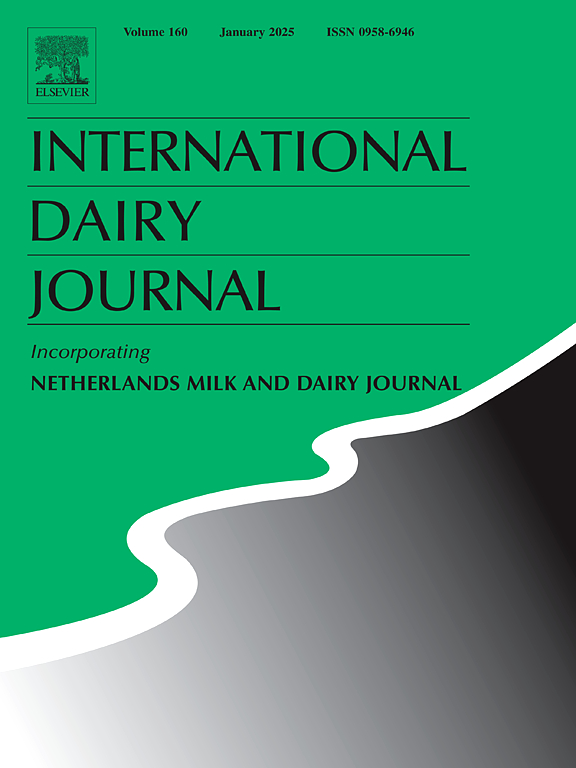The growth characteristics of Heyndrickxia sporothermodurans in ultra high temperature (UHT) milk and its inactivation by commonly used sanitation methods
IF 3.1
3区 农林科学
Q2 FOOD SCIENCE & TECHNOLOGY
引用次数: 0
Abstract
The presence of Heyndrickxia sporothermodurans is a widespread concern in dairy industry due to its highly thermal-resistant spores. The "Cleaning-in-place" (CIP) system is the primary method used by dairy industry to control them. But the food safety-related properties of H. sporothermodurans remain poorly understood. Thus, this study proposes to determine the growth characteristics and sporulation of H. sporothermodurans in different matrices, as well as the efficacy of various disinfectants against its biofilm and spore. Therefore, the growth of vegetative cell and spore germination in rich media (brain heart infusion, BHI) and ultra-high temperature (UHT) milk for at least 360 h was investigated in this research. In addition, the biofilms of different maturity induced on stainless steel surfaces were sanitized simulating a CIP procedure, using disinfectants (200 mg/mL peracetic acid, 1.5% sodium hydroxide, and 1% nitric acid). Scanning electron microscopy (SEM) was used as a complementary technique to observe the conditioning of the stainless steel surface after 10 d. Subsequently, the effects of these sanitation methods against the spore were performed in 96-well plates. The observation of growth behavior revealed that the vegetative cells and spore cells may be interconverted in a nutrient-rich environment, resulting in a balanced mode in which spores account for approximately 0.1% of the total cells. This could be used to anticipate the number of contaminated bacteria in a UHT plant environment. The sterilization efficiency tests showed that these sanitation methods were efficient against biofilms but not against spores. Therefore, new inactivation strategies against spores should be proposed and should focus on spores adhesion and the biofilms induced by spores.
求助全文
约1分钟内获得全文
求助全文
来源期刊

International Dairy Journal
工程技术-食品科技
CiteScore
6.50
自引率
9.70%
发文量
200
审稿时长
49 days
期刊介绍:
The International Dairy Journal publishes significant advancements in dairy science and technology in the form of research articles and critical reviews that are of relevance to the broader international dairy community. Within this scope, research on the science and technology of milk and dairy products and the nutritional and health aspects of dairy foods are included; the journal pays particular attention to applied research and its interface with the dairy industry.
The journal''s coverage includes the following, where directly applicable to dairy science and technology:
• Chemistry and physico-chemical properties of milk constituents
• Microbiology, food safety, enzymology, biotechnology
• Processing and engineering
• Emulsion science, food structure, and texture
• Raw material quality and effect on relevant products
• Flavour and off-flavour development
• Technological functionality and applications of dairy ingredients
• Sensory and consumer sciences
• Nutrition and substantiation of human health implications of milk components or dairy products
International Dairy Journal does not publish papers related to milk production, animal health and other aspects of on-farm milk production unless there is a clear relationship to dairy technology, human health or final product quality.
 求助内容:
求助内容: 应助结果提醒方式:
应助结果提醒方式:


